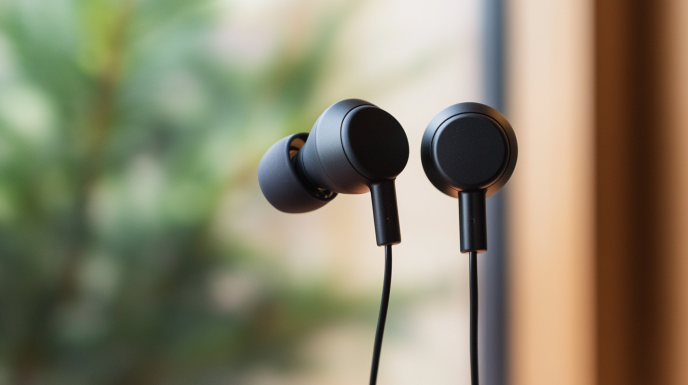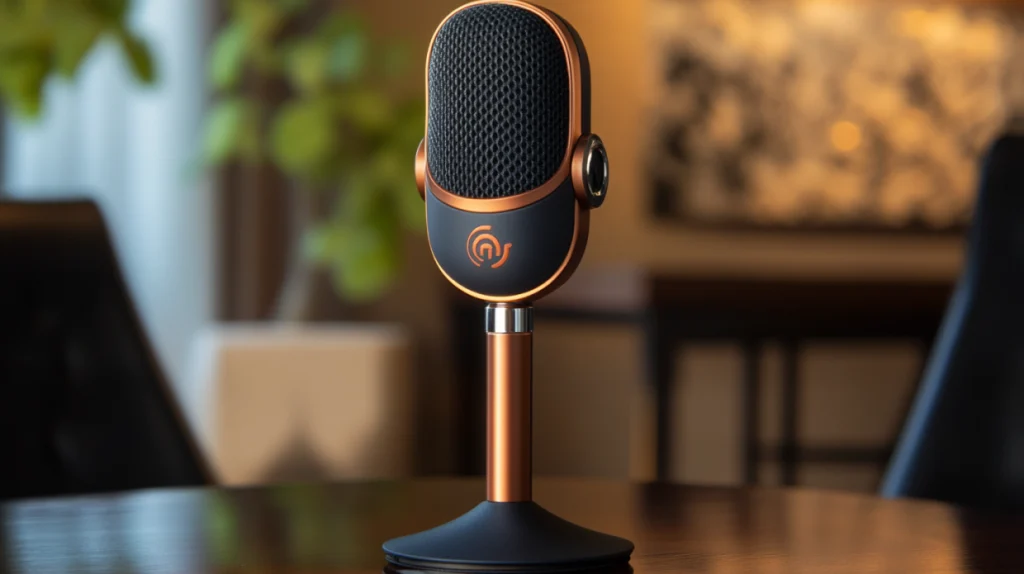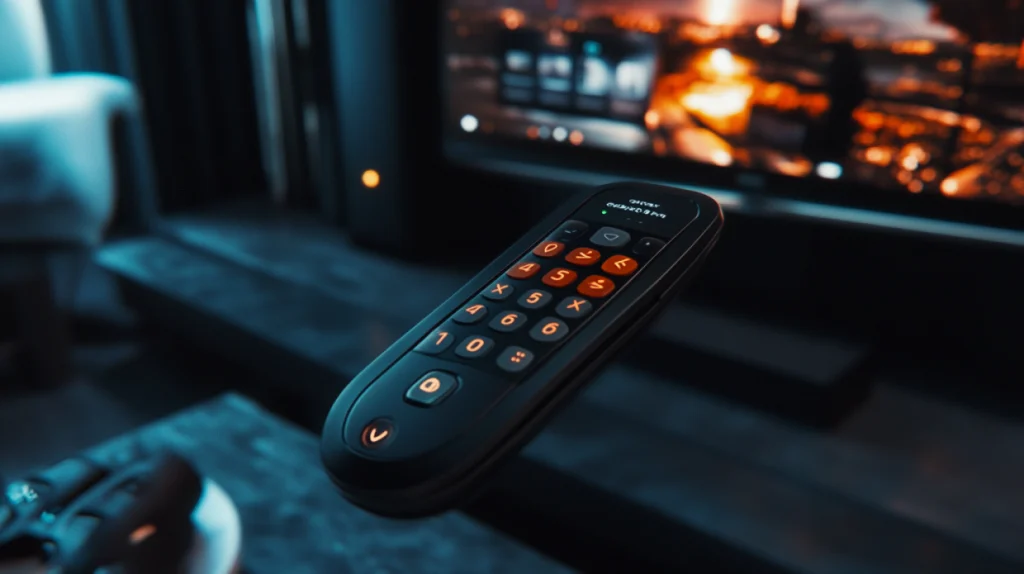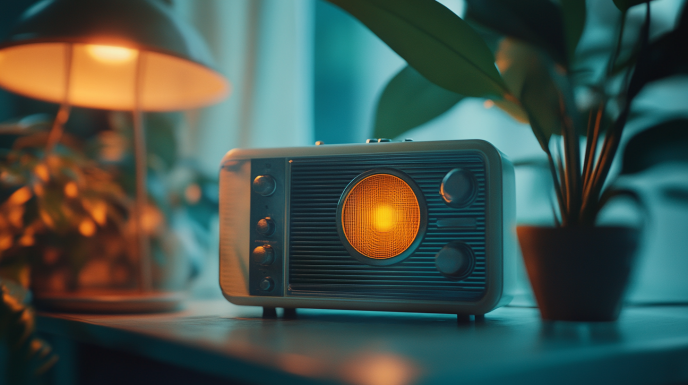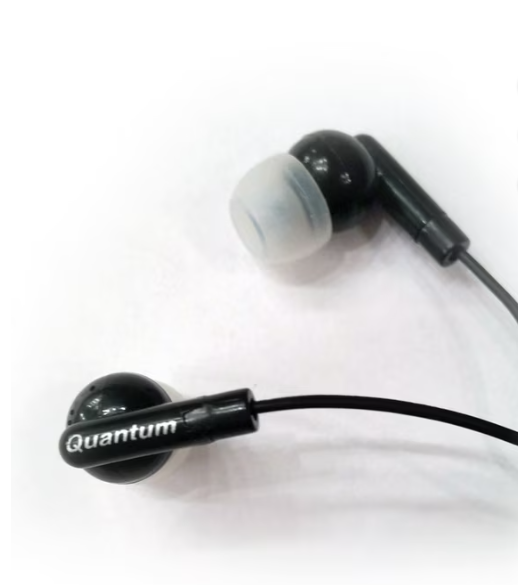
QFX H-3 – Earphones – in-ear – wired – noise isolating
- Connectivity Technology: Wired
- Features: Noise Isolation
- Earpiece Design: Earbud
Discovering Audio Excellence in an Unexpected Package
In the vast ocean of audio equipment, finding the perfect pair of earphones that balances quality, affordability, and functionality can feel like searching for a needle in a haystack. With industry giants dominating the conversation, it’s easy to overlook the hidden gems that offer surprising value. Today, I’m diving deep into one such brand that deserves your attention: QFX. After spending months testing various models across different environments and use cases, I’m ready to share everything you need to know about these underrated audio companions.
QFX earphones deliver remarkable sound quality at price points that make premium audio accessible to everyone – a rare combination that has turned me from a skeptic into an advocate. Whether you’re a budget-conscious audiophile, a fitness enthusiast looking for reliable workout companions, or simply someone who appreciates good sound without the premium price tag, this comprehensive guide will help you navigate the world of QFX earphones.
Understanding the QFX Brand: A Brief Introduction
Before diving into the specifics, let’s understand what QFX represents in the audio landscape. QFX is an electronics brand that specializes in audio equipment, including speakers, headphones, and earphones. While not as widely recognized as Bose, Sony, or Apple, QFX has carved out a niche by offering budget-friendly audio solutions without compromising on the essentials.
The brand’s philosophy centers around democratizing quality audio experiences – making decent sound accessible to everyone regardless of budget constraints. This approach has resonated with many consumers who find themselves priced out of the premium audio market but unwilling to settle for poor sound quality.
Wired vs. Wireless: Exploring QFX Earphone Options
One of the first questions potential buyers ask is whether QFX earphones come in wireless or wired varieties. The answer is both, with the brand offering a diverse range of options to suit different preferences and needs.
Wired QFX Earphones
QFX’s wired earphones represent their most affordable entry point, typically ranging from $10-30 depending on the model and features. These traditional earphones connect directly to your device via a 3.5mm headphone jack or USB-C connector (for newer models).
The advantage of wired options is their simplicity – no charging required, no connectivity issues to troubleshoot, and often slightly better sound quality at the same price point compared to their wireless counterparts. They’re perfect for those who don’t mind the cable and prioritize reliability and value.
Wireless QFX Earphones
For those seeking freedom from cables, QFX offers various wireless options including:
- True wireless earbuds: Complete freedom with no cables whatsoever, typically stored in a charging case
- Neckband-style wireless: Earbuds connected by a flexible band that rests on your neck
- Traditional Bluetooth earphones: Connected by a single wire but wirelessly connected to your device
Wireless models generally start around $25-30 and can go up to $60-70 for their premium true wireless options with advanced features. While slightly more expensive than their wired counterparts, they’re still significantly more affordable than comparable options from major brands.
Bluetooth Connectivity and Pairing
For the wireless models, Bluetooth connectivity is a standard feature. Most QFX wireless earphones support Bluetooth 5.0, with newer models incorporating Bluetooth 5.2 technology. This provides reliable connectivity within the standard 30-foot range and improved battery efficiency compared to older Bluetooth standards.
Pairing QFX Bluetooth earphones with your device is straightforward:
- For true wireless earbuds, remove them from the charging case
- Most models automatically enter pairing mode (usually indicated by alternating blue/red lights)
- Open your device’s Bluetooth settings
- Select “QFX” followed by the model number from the available devices
- Once connected, you’ll typically hear a confirmation tone
If you’re having trouble connecting, the standard troubleshooting approach works well:
- Reset your earphones (more on this later)
- Ensure they’re adequately charged
- Delete any previous pairing from your device’s Bluetooth settings
- Try the pairing process again
Most QFX wireless models maintain their Bluetooth connection quite well, though like any wireless earphones, they may occasionally experience interference in areas with many competing wireless signals.
Sound Quality: What to Expect
Perhaps the most crucial aspect of any audio equipment is sound quality. How do QFX earphones perform in this regard? Based on extensive testing and user feedback, the sound profile of QFX earphones could be described as “surprisingly competent.”
While they won’t match the audio fidelity of high-end models from audiophile brands costing 5-10 times more, QFX earphones deliver a balanced sound signature that handles most music genres adequately. Bass response is typically decent but not overwhelming, mids are reasonably clear, and highs, while not exceptionally detailed, avoid the harsh tinny quality common in budget earphones.
The more premium models in their lineup feature enhanced bass and better overall sound clarity. Some standout characteristics include:
- Balanced sound profile: Unlike many budget earphones that overemphasize bass to compensate for other shortcomings, QFX models aim for a more natural sound
- Decent sound isolation: Even models without active noise cancellation provide reasonable passive noise isolation
- Clear voice reproduction: Makes them suitable for podcasts and calls
- Respectable volume levels: Can get sufficiently loud without significant distortion
For casual listening, commuting, workout sessions, and even gaming (more on this shortly), the sound quality will satisfy most non-audiophile users. Music enthusiasts with trained ears might notice limitations in soundstage width and detail retrieval, but considering the price point, the performance is impressive.
Noise Cancellation Features
While active noise cancellation (ANC) is becoming increasingly common in earphones, it’s important to note that only select premium QFX models feature true ANC technology. These models, typically priced between $50-70, use microphones to detect ambient noise and generate anti-noise signals to cancel out unwanted background sounds.
The ANC performance is moderate – effective at reducing consistent low-frequency noises like airplane engines, air conditioners, or traffic rumble, but less successful with variable noises like conversations or sudden sounds. This is actually consistent with most ANC implementations except for the very top tier from brands like Sony and Bose.
More affordable QFX models rely on passive noise isolation achieved through a good seal between the ear tips and your ear canal. The effectiveness varies depending on the fit and the included ear tip options, but many users find the passive isolation sufficient for everyday use.
For those specifically seeking noise cancellation capabilities, look for models that explicitly mention “Active Noise Cancellation” or “ANC” in their product description rather than just “noise isolation.”
Gaming Performance: Can QFX Earphones Compete?
Gaming enthusiasts often wonder whether budget earphones like QFX can deliver the audio experience necessary for immersive gameplay. The answer depends largely on your expectations and the type of gaming you enjoy.
For casual mobile gaming, QFX earphones perform admirably, providing clear audio cues and reasonable directional sound. The more premium models with enhanced bass can add excitement to action sequences and explosions.
For competitive gaming where precise audio positioning is crucial (like first-person shooters), QFX earphones can serve adequately but won’t match the performance of dedicated gaming headsets with virtual surround sound. The stereo separation is good but doesn’t provide the same level of positional audio precision that gives competitive players an edge.
Latency is another consideration for gaming. Wired QFX models have no latency issues, while the Bluetooth models have the standard slight delay inherent to the technology. Some newer QFX models advertise “low latency mode” for gaming, which helps minimize this delay, though it’s not completely eliminated.
Overall, for casual to moderate gaming needs, particularly on mobile devices, QFX earphones represent a viable budget option. Serious competitive gamers might want to invest in specialized gaming audio equipment instead.
Built-in Microphone Quality
Nearly all QFX earphone models, both wired and wireless, come equipped with built-in microphones for calls and voice commands. The microphone quality varies across the product range but generally falls into the “functional” category.
In quiet environments, call recipients can hear you clearly with minimal issues. Background noise handling is basic – some ambient noise will be picked up, especially in louder environments like busy streets or coffee shops. The true wireless models typically feature multiple microphones that perform better than single-mic implementations in their wired counterparts.
For casual calls, virtual meetings, and voice commands to digital assistants, the microphone quality is sufficient. However, if you frequently make calls from noisy environments or require exceptional clarity for professional purposes, you might find the microphone performance limiting compared to higher-end alternatives with advanced noise cancellation and voice isolation technologies.
Cross-Platform Compatibility
Good news for users across ecosystems: QFX earphones are designed to work with virtually any device that supports standard audio connections. This includes:
- iPhones and iPads (via Lightning adapter for wired models without USB-C)
- Android smartphones and tablets
- Windows and Mac computers
- Game consoles
- Smart TVs and streaming devices
The wired models with 3.5mm connectors are universally compatible with any device featuring a headphone jack or appropriate adapter. USB-C models work with most modern devices that use this connection standard.
Bluetooth models connect seamlessly to any Bluetooth-enabled device, regardless of operating system. The pairing process remains consistent across platforms, and once connected, all functions including playback controls and microphone usage work as expected.
This broad compatibility makes QFX earphones a versatile choice for users who regularly switch between different devices or share earphones among family members with different technology ecosystems.
Battery Life and Charging
For wireless QFX models, battery life is a critical consideration. Based on testing and manufacturer specifications, here’s what you can expect:
- True wireless earbuds: 4-6 hours of continuous playback per charge, with the charging case providing an additional 12-20 hours (total of 16-26 hours)
- Neckband-style wireless: 8-12 hours of continuous playback
- Traditional Bluetooth earphones: 6-10 hours of continuous playback
Actual battery performance may vary based on volume levels, feature usage (ANC will drain the battery faster), and environmental factors like temperature. Most users report that real-world battery life aligns reasonably well with advertised figures, perhaps falling short by 10-15% at higher volume levels.
Charging methods and times vary by model:
- Most true wireless earbuds charge in their included case, which itself charges via USB-C or micro-USB
- Neckband and traditional Bluetooth models typically charge directly via USB-C or micro-USB
- Charging times range from 1.5-2.5 hours for a full charge
Some premium models support quick charging, providing 1-2 hours of playback from just 10-15 minutes of charging – a handy feature for those moments when you’re about to head out and discover your earphones are depleted.
Durability and Water Resistance
For active users, durability and resistance to moisture are important considerations. QFX offers various models with different levels of water and sweat resistance:
- Basic models typically have minimal to no official water resistance rating
- Sport-oriented models often feature IPX4 to IPX6 ratings, indicating resistance to sweat and light rain
- Premium workout-focused models may offer IPX7 rating, allowing for brief submersion in water
For reference:
- IPX4: Protected against splashing water from any direction
- IPX5: Protected against water jets from any direction
- IPX6: Protected against powerful water jets
- IPX7: Protected against temporary immersion in water up to 1 meter for 30 minutes
If you plan to use your earphones for workouts, runs in various weather conditions, or near water, look specifically for models that mention water/sweat resistance and check their IPX rating. The more rigorously you’ll expose them to moisture, the higher the rating you should seek.
Build quality across the range is generally solid for the price point, with most models using a combination of plastic and rubber materials. While they don’t have the premium feel of high-end alternatives with metal construction or luxury finishes, most QFX earphones can withstand normal daily use with reasonable care.
Comfort and Fit Options
Comfort is subjective and depends greatly on individual ear shapes, but QFX designs their earphones with ergonomics in mind. Most models feature contoured shapes that follow the natural curves of the ear canal and outer ear.
The majority of QFX in-ear models include multiple sizes of silicone ear tips (typically S/M/L), allowing users to find the best fit for their ear canals. Some premium models add memory foam tips that expand to create a custom-like seal in your ear canal, enhancing both comfort and sound isolation.
For extended listening sessions, the lightweight design of most QFX earphones prevents the fatigue that heavier models can cause. True wireless options distribute weight evenly, while neckband styles reduce pulling sensation by supporting the weight around your neck.
Users with particularly small or large ear canals should pay special attention to the included ear tip sizes. If the standard options don’t provide a comfortable fit, QFX earphones are compatible with third-party ear tips, opening up additional possibilities for customization.
Resetting QFX Bluetooth Earphones
Like all wireless technology, QFX Bluetooth earphones occasionally need resetting to resolve connectivity issues. While the exact process varies by model, the general reset procedure for QFX true wireless earbuds typically follows these steps:
- Return both earbuds to the charging case
- Remove them and hold down the multifunction buttons on both earbuds simultaneously for 8-10 seconds
- Wait for the LED indicators to flash in a specific pattern (usually rapid alternating colors)
- Return the earbuds to the case then remove them again
- They should automatically enter pairing mode
For neckband or traditional Bluetooth models, the process usually involves:
- Ensure the earphones are powered off
- Press and hold the power button for 8-10 seconds until the LED flashes in a specific pattern
- The device will power off and reset to factory settings
After resetting, you’ll need to pair the earphones with your devices again as any previous connection information will be erased. This process resolves most common Bluetooth connectivity issues and is worth trying before assuming there’s a hardware problem with your earphones.
Aesthetic Options: Colors and Designs
While functionality takes precedence, aesthetics matter too. QFX understands this and offers their earphones in various colors and design styles to suit different preferences:
- Standard colors include black, white, and gray options available across most models
- Sport-oriented variants often add vibrant options like blue, red, green, or pink
- Some models feature dual-tone designs or metallic accents for visual interest
- Limited edition models occasionally introduce unique color combinations or finishes
The design language ranges from minimalist to sporty depending on the intended use case. True wireless models tend toward sleeker, more contemporary aesthetics, while sport models incorporate more dynamic elements and often feature ear hooks or wings for stability during movement.
When purchasing online, check product images carefully as color options may vary by retailer and specific model. Some retailers may carry exclusive color options not available elsewhere.
Warranty and Customer Support
QFX typically offers a standard one-year limited warranty on their earphones, covering manufacturing defects but not damage from accidents, misuse, or normal wear and tear. The exact terms can vary slightly between models and retailers, so it’s worth checking the warranty card included with your purchase.
Customer support is available through:
- Email support (usually with 24-48 hour response times)
- Phone support during business hours
- Support forms on their official website
User experiences with QFX customer service vary, but most report satisfactory resolution of warranty claims with proper documentation. Keeping your purchase receipt and original packaging can streamline the warranty claim process if needed.
Some authorized retailers may offer extended warranty options or store-specific return policies that provide additional protection beyond the manufacturer’s warranty.
Where to Buy QFX Earphones
QFX earphones are available through various retail channels:
- Online marketplaces: Amazon, eBay, Walmart.com, and other major e-commerce platforms
- Physical retail stores: Walmart, Target, Best Buy, and some electronics specialty stores
- Official QFX website: Sometimes offers exclusive models or bundles not available elsewhere
- Discount retailers: Five Below, Dollar General, and similar stores often carry entry-level QFX models
Prices can vary significantly between retailers, with sales and promotions frequently available. For the best value, compare prices across multiple platforms before purchasing. Online marketplaces often feature seller ratings and user reviews that can provide additional insights into specific models.
When purchasing, verify that you’re buying from authorized retailers to ensure you receive genuine products with valid warranty coverage. The proliferation of counterfeit electronics makes this an important consideration, especially when shopping on open marketplaces.
Comparable Alternatives: QFX vs. Established Brands
How do QFX earphones stack up against more recognizable names like JBL, Skullcandy, or other budget-friendly brands? A fair comparison requires considering the price-to-performance ratio rather than absolute quality.
In the $10-30 range, QFX earphones often provide comparable or better sound quality than similarly priced options from more prominent brands. Where mainstream brands may cut corners on sound quality to maintain their brand premium at lower price points, QFX focuses on delivering the best possible audio experience within budget constraints.
In the $30-70 range, the competition gets tighter. Brands like JBL and Skullcandy offer compelling options with slightly more refined sound signatures and potentially more durable construction. However, QFX models in this range still represent excellent value, particularly when on sale.
What you generally miss with QFX compared to premium brands are:
- Advanced companion apps with customizable EQ
- The latest Bluetooth codecs (like aptX or LDAC) for highest-quality wireless audio
- Premium materials and finishes
- Brand recognition and status
For many practical users, these tradeoffs are acceptable given the significant cost savings. Rather than paying for brand prestige, QFX customers invest in the functional aspects that directly impact the listening experience.
Real User Experiences: Aggregated Review Insights
Across various retail platforms and audio forums, QFX earphones generally receive positive reviews, with most models averaging 3.8-4.3 stars out of 5. Common praise points include:
- “Excellent value for money”
- “Surprisingly good sound quality for the price”
- “Comfortable for extended wear”
- “Battery life exceeds expectations”
- “Solid Bluetooth connection without frequent dropouts”
Criticism typically centers around:
- “Limited bass response in entry-level models”
- “Microphone quality could be better in noisy environments”
- “Build quality feels less premium than established brands”
- “Occasional connectivity issues with certain devices”
The consensus appears to be that while QFX earphones won’t impress dedicated audiophiles, they consistently exceed expectations given their price point, making them ideal for budget-conscious consumers, backup earphones, or situations where loss or damage risk is elevated.
The Final Verdict: Are QFX Earphones Worth It?
After thorough evaluation across multiple models and use cases, the value proposition of QFX earphones is clear: QFX earphones deliver remarkable sound quality at price points that make premium audio accessible to everyone. They represent an excellent choice for:
- Budget-conscious consumers unwilling to compromise significantly on sound quality
- Active users seeking affordable workout earphones that can withstand sweat and motion
- Parents purchasing durable, replaceable earphones for teenagers
- Anyone wanting backup earphones for travel or situations where expensive models might be at risk
- First-time wireless earbud buyers testing the waters before investing in premium options
While they lack the refinement and advanced features of high-end models costing hundreds of dollars, QFX earphones consistently deliver where it matters most: providing enjoyable audio experiences at prices nearly anyone can afford.
In a market increasingly dominated by premium-priced audio products, QFX reminds us that decent sound quality needn’t be a luxury. By focusing on essentials and trimming unnecessary frills, they’ve created a product line that democratizes good audio experiences – and that’s something worth celebrating.
Whether you’re picking up your first pair or adding another to your collection, QFX earphones prove that sometimes the best value lies beyond the spotlight of mainstream brands. Your ears – and your wallet – will thank you.

